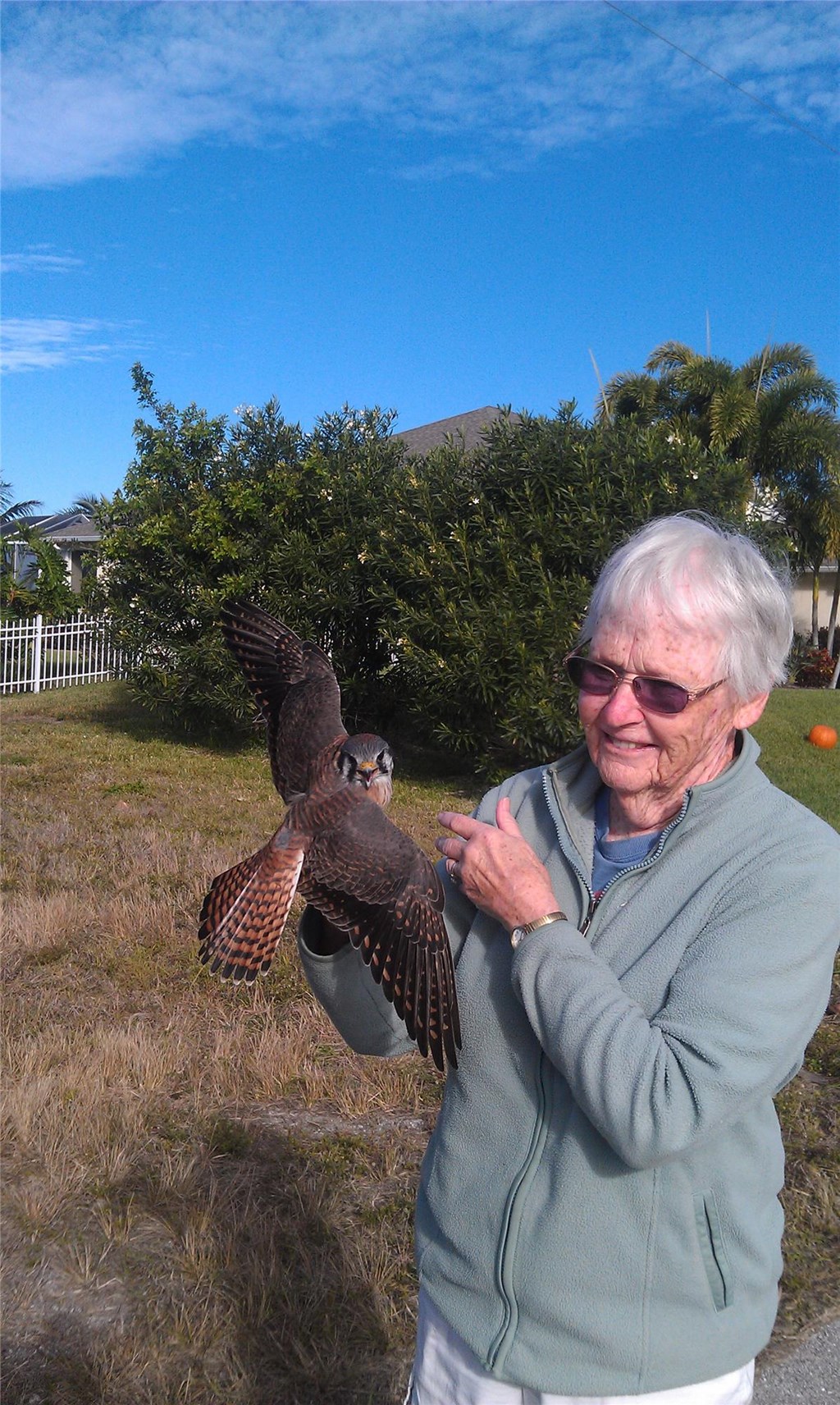Studying Kestrels Year-round
Posted on March 10, 2020 in Science

Over the last decades, insights from banding reports have taught us of the strong migration connectivity that exist for American kestrels breeding in eastern North American states such as a Pennsylvania and wintering grounds in Florida. Indeed, for nearly 30 years now, Hawk Mountain researchers and volunteers have been studying kestrels around Cape Coral (Florida), an important wintering ground for the species. Back in the early 1990s, volunteer Bob and Sue Robertson were amazed by the abundance of the small falcon during the non-breeding season. At the time, hundreds of kestrels could be found using the large, undeveloped, yet mowed area as they perched on telephone wires that line a grid-system of streets across the cape. . Bob and Sue’s efforts have since allowed us to assess annual survival rate of American kestrels wintering there (Hinnebusch et al. 2010)
Over time however, the Robertsons have witnessed the cape getting highly developed with houses and businesses and the amount of undeveloped land has been substantially reduced. This means less foraging habitat is available for wintering kestrels and other wildlife to use. This winter, Sanctuary staff assisted by Kirsten Fuller, a former Hawk Mountain trainee and potential PhD student, joined the Robertsons to assess kestrel abundance and habitat use in this changing landscape. Overall, we counted 42 kestrels (some of them already banded), most of them in the northern (less developed) portion of the cape. We intend to use these observations to assess winter habitat use by age and sex-classes as well as survival during the non-breeding season, two crucial aspects for conservation.
Cape Coral is an exciting place to witness conservation in action because anthropogenic development and the ever-growing needs of civilization interact tightly with wildlife. Indeed, in addition to American kestrels and several other northern migrants, we were excited to see some Gopher tortoises sharing the remaining space and to catch a glimpse of many sassy little Florida Burrowing Owls, actively defending their burrows. These diurnal owls are most susceptible to disturbance and predation from coyotes, cats and dogs. The city does a great job of locating burrows, installing perches, and providing interpretive signs at nest sites to protect this threatened species, but the need for outreach, research and education is as important as ever.
If you are interested in supporting our work with American kestrels, please contact Dr. Laurie Goodrich (570-943-3411 x106, [email protected]) or Dr. JF Therrien (570-943-3411 x104; [email protected]).